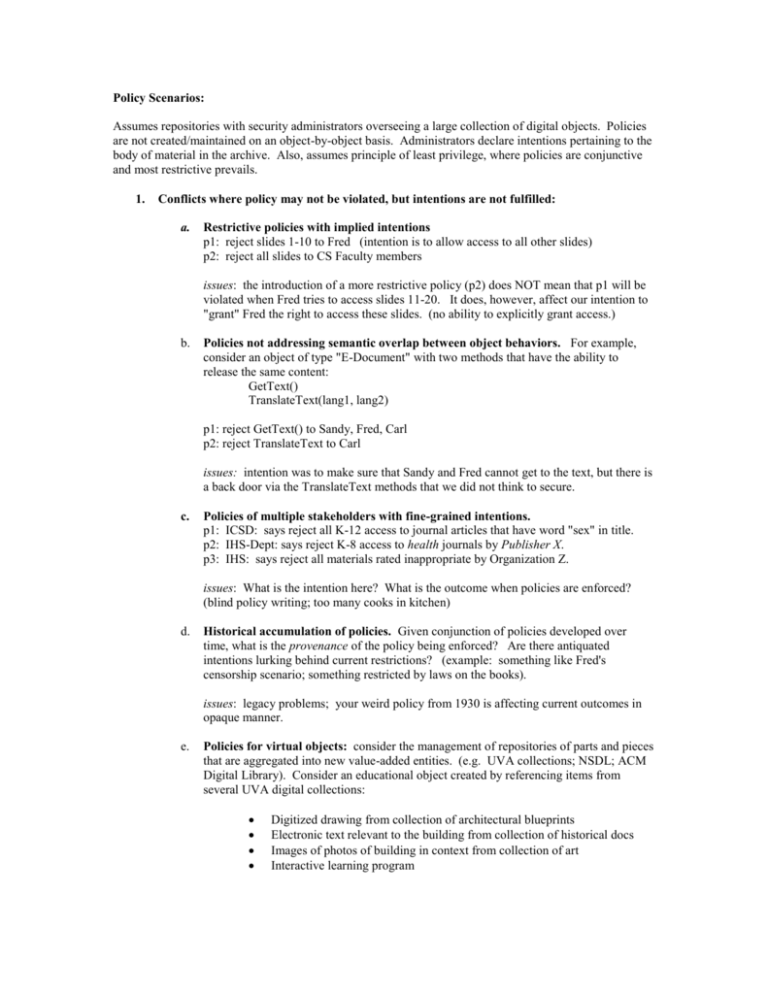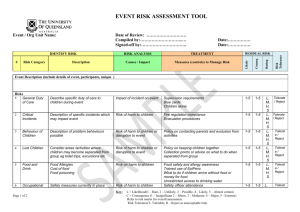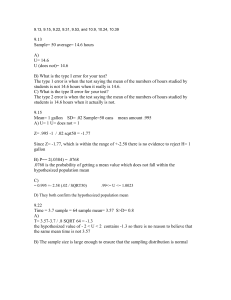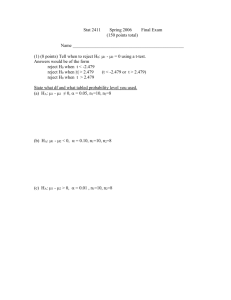Policy Scenarios
advertisement

Policy Scenarios: Assumes repositories with security administrators overseeing a large collection of digital objects. Policies are not created/maintained on an object-by-object basis. Administrators declare intentions pertaining to the body of material in the archive. Also, assumes principle of least privilege, where policies are conjunctive and most restrictive prevails. 1. Conflicts where policy may not be violated, but intentions are not fulfilled: a. Restrictive policies with implied intentions p1: reject slides 1-10 to Fred (intention is to allow access to all other slides) p2: reject all slides to CS Faculty members issues: the introduction of a more restrictive policy (p2) does NOT mean that p1 will be violated when Fred tries to access slides 11-20. It does, however, affect our intention to "grant" Fred the right to access these slides. (no ability to explicitly grant access.) b. Policies not addressing semantic overlap between object behaviors. For example, consider an object of type "E-Document" with two methods that have the ability to release the same content: GetText() TranslateText(lang1, lang2) p1: reject GetText() to Sandy, Fred, Carl p2: reject TranslateText to Carl issues: intention was to make sure that Sandy and Fred cannot get to the text, but there is a back door via the TranslateText methods that we did not think to secure. c. Policies of multiple stakeholders with fine-grained intentions. p1: ICSD: says reject all K-12 access to journal articles that have word "sex" in title. p2: IHS-Dept: says reject K-8 access to health journals by Publisher X. p3: IHS: says reject all materials rated inappropriate by Organization Z. issues: What is the intention here? What is the outcome when policies are enforced? (blind policy writing; too many cooks in kitchen) d. Historical accumulation of policies. Given conjunction of policies developed over time, what is the provenance of the policy being enforced? Are there antiquated intentions lurking behind current restrictions? (example: something like Fred's censorship scenario; something restricted by laws on the books). issues: legacy problems; your weird policy from 1930 is affecting current outcomes in opaque manner. e. Policies for virtual objects: consider the management of repositories of parts and pieces that are aggregated into new value-added entities. (e.g. UVA collections; NSDL; ACM Digital Library). Consider an educational object created by referencing items from several UVA digital collections: Digitized drawing from collection of architectural blueprints Electronic text relevant to the building from collection of historical docs Images of photos of building in context from collection of art Interactive learning program issues: the scenario assumes that the various collections are fodder for potential new objects, and that these potential objects are typically not envisioned ahead of time. How are policies managed to provide for unambiguous present policies and also foster creation of new entities in a collaborative environment? (Content provider need to be clairvoyant; how do know when your giving the farm away?) f. Time/Event-oriented policies. (e.g, issues of expiration, copyright, process). Consider preservation policies, where particular events occur within particular timeframes, or in particular sequence, then the policy is violated, and some preservation action/alert is triggered. issues: what if things are triggered by the passing of time or occurrence of events outsider the object? 2. General Challenges: a. Precedence of policies: How loosen or override policies? p1 instead of p2 b. Undesired Conjunctions: How detect/prevent unintended overlaps of policy? p1 ^ p2 = YUK This is especially difficult because we would need an objective measure of intent. When I introduce a more restrictive policy, there are times when my intent is to cut everyone out, and there are other times when I meant to tighten things up, but not cut Fred out. How can the PIA know the difference? It can't, so maybe the best it can do is provide a sort of impact analysis when new policies are introduced into the PIA. c. Affirmative and Negative: how express both what you want to happen and what you don't want to happen? (Reject vs. allow). p1: reject m1 and allow m2 p2: reject m1 (says nothing about m2) p3: allow m2 (says nothing about m1) d. Extensibility: How ensure that policies extend when object behaviors extend? o1 o1.1 p1 ?? p2 ??








